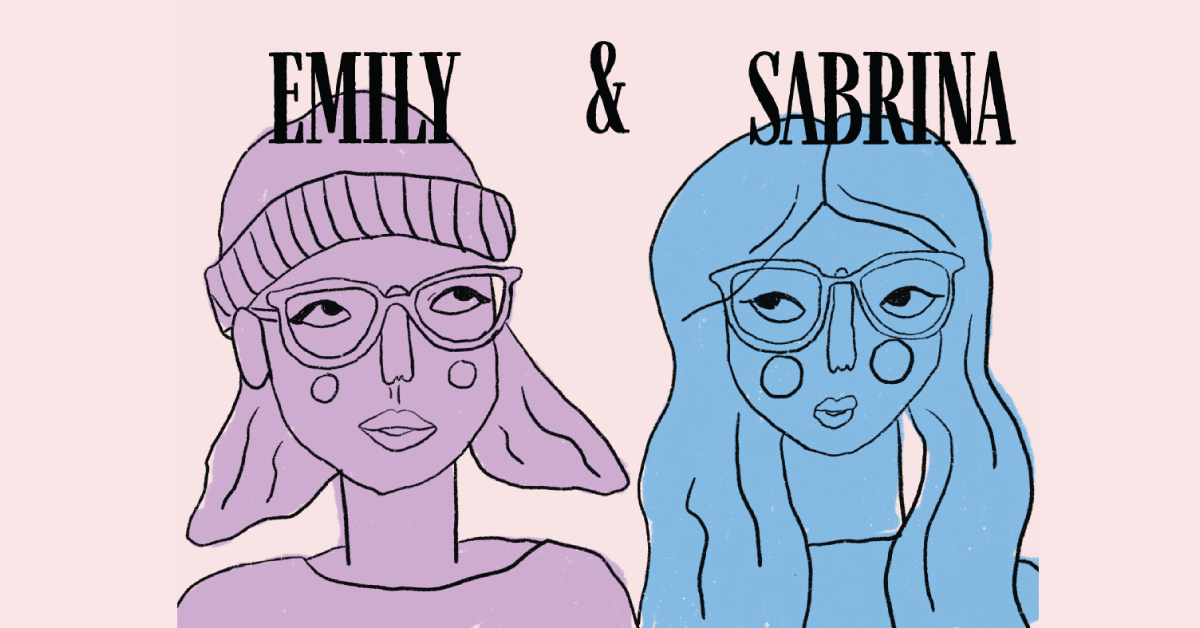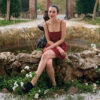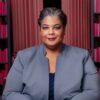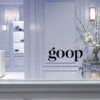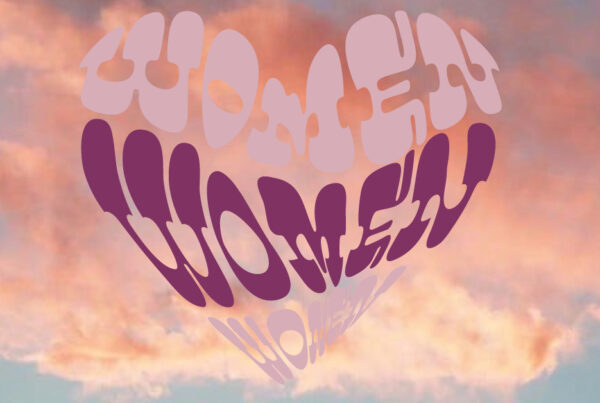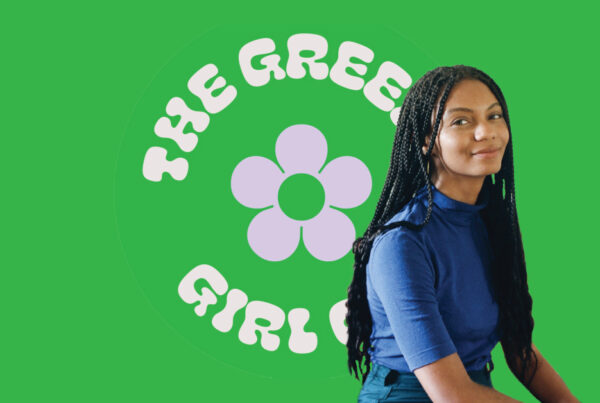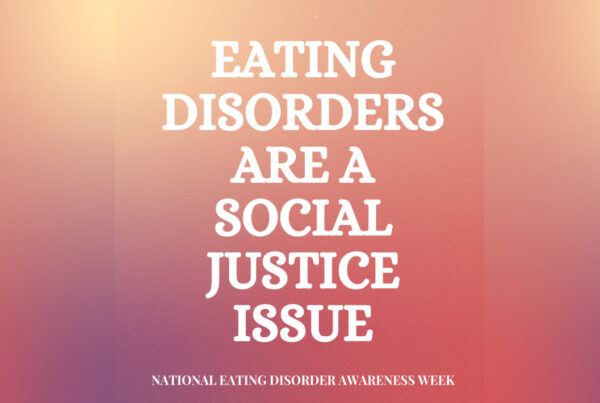A Conversation on Bi-Erasure From Bi+ and Bi+ Ally Perspectives
February’s not over yet and love is still on the brain. But what if your idea of love looks a little different? Even though bisexual is the second most common sexual orientation (behind heterosexual), the bi+ community still struggles with being invalidated and erased from conversations of queerness. Emily Powers, a queer woman, and Sabrina Serani, a bi woman, sat down to bust some myths and discuss what the LGBTQA+ community can do to come together.
NOTE: For the purpose of this article, bisexuality will be defined as follows: the potential to be attracted, romantically or sexually, to people of more than one gender, not necessarily at the same time, in the same way, or to the same degree. We believe in the pansexual identity but as Sabrina identifies as bisexual, we will use bisexual in this conversation.
Our Stories
SS: I’m bi but I’m in a relationship with a straight man so most people think that I’m straight. I didn’t start identifying as bi until I’d been in my relationship for a while. I didn’t come out to my family and friends and I don’t feel the need to have that experience, which I think is a privileged position, because my identity doesn’t affect anyone outside my relationship. Being bi makes a lot of sense in hindsight. I don’t know when I learned what being bi was, but by the time I did, I had already internalized that it was right to be straight. And I also had an eating disorder from the age of 10, so a lot of my experience of desire was in a big knot.
EP: It’s so interesting to hear people’s “coming out to themselves” stories because they all are so different and it can be so confusing for so long. Especially when there’s this idea in our community that there’s a very specific way to “be” a certain label.
SS: You hear stories about people who are like, “Well, I’ve known since I was 5 years old.” And I’m like, “Well, that’s great. I’m different.”
EP: Very true. I’m kind of the funny other side of that where I came out at 12. I knew I liked women from a very young age because I loved The Silence of The Lambs. And I felt a physical reaction to that Jodie Foster jogging scene in my soul.
SS: Jodie Foster is a common point of realization.
EP: Very much so. I had the kind of typical coming out that you see in movies. I realized when I was 12 and came out to my family at 14 and had my first kiss at 16. I was a very early bloomer in that way because I know a lot of queer folk don’t have their “firsts” until college. But I dated girls through high school and I was the “out” gal, which was an experience. I played a lot of sports so there was a lot of not-so-friendly locker room talk. I’ve definitely been on the brunt end of that kind of homophobia. In college, I continued to date women. My partner of two years is also bisexual and she’s lovely!
MYTH 1: Bisexuality is a phase on the way to being gay/straight.
SS: I understand where that comes from because there is always a label to the relationship. If I’m with a straight man, my relationship looks straight or if I’m with a gay woman, my relationship looks queer. If that’s the criteria, then the only ways to be bisexual are to equally date the genders you are attracted to at the same time or always be single. It’s convoluting the identity of the person and what their relationship is.
EP: It’s so funny because you were just saying how everyone has their own coming out journey and it’s all so different. So the idea that there is one specific coming-out path that everyone needs to follow is very silly. And on the assumption that being bi is “taking one step out of the closet” — that is a genuine part of some people’s journey. I had a phase where I experimented with men but I wouldn’t label it as half coming out. Experimentation is not a phase; you are just figuring yourself out. But the problem is that some people have an experience similar to mine and they think it is a part of everyone’s experience and journey.
MYTH 2: You can’t be bisexual unless you’ve had sexual experiences with both men and women.
EP: When I came out at 12, it wasn’t because I was sleeping with women. People know who they are attracted to.
SS: You don’t have to have sex with someone of the opposite gender to say that you are straight.
EP: I’d say desire is the prelude to sex. Who you have sex with doesn’t define your sexuality, it’s who you are attracted to.
MYTH 3: Bisexuals have to like men and women equally.
SS: I don’t even subscribe to the idea of ratios because it’s just different. If straight people are red and gay people are yellow, bi people are not orange. We’re not a blend of the two. We’re blue. It’s a totally different experience. Human desire is so poorly understood in general. You can’t split it that way.
EP: I think people are trying to simplify or rationalize things into numbers. And people aren’t numbers.
SS: We like things to be black and white and we don’t like gray areas. But sexuality in general, regardless of who you are attracted to, is a gray area.
MYTH 4: Bisexuals are promiscuous/polyamorous/immoral.
SS: There is a statistic that says most people who practice non-monogamy are bi, but there is no qualification that says to be bi you have to be poly. And most people who are bi are in straight relationships. So that’s just people being biphobic.
EP: This is something that would come up a lot in my life, more when I was single. There is this unspoken notion with lesbians that if you date a bisexual, she is going to cheat on you. Some lesbians just won’t date bi girls. It’s this thought that they are going to leave you for a man or cheat on you, which is so silly because cheating has nothing to do with sexuality. It doesn’t matter if she’s cheating with a guy or a gal. It’s a question of morality.
SS: I think that’s a similar anxiety with straight guys. Hooking up with a bi girl is hot, but they don’t want to date someone who is bi because they are scared of being left for a woman and being emasculated.
MYTH 5: Bisexuals are transphobic.
SS: I understand where the myth or the anxiety comes when you take the didactic, bi-meaning-two definition of bisexuality. The labels you use vary for the audience you are talking to. To a straight audience, it’s probably easier to say bi. But if you’re talking to people who are more invested in queer theory, it might be easier to say you’re fluid. The labels that we choose are what feels right for us, but they also have to be what feels right for the audience we’re with.
EP: There are so many ways that people are trying to make an already oppressed community fight within itself, which is kind of frustrating because we are already on the outskirts. You’d think this community would be a utopia or safe space for everyone, so it’s always sad when transphobia or biphobia comes up. If it’s not this community, where are people going to go?
SS: There is this competitive nature of being the perfect representation of whatever your label is. There is this question of what’s going to unify the group. The same problems that plague everyone else are still present.
MYTH 6: Bisexual men are basically gay and bisexual women are basically straight.
SS: I’ve made the mistake before where a man who I know is bi is in a relationship with a man, and I say, “Oh, he’s gay.” And then I realized that no, he’s not. It comes back to the thing of labeling the relationship and not respecting the identity of the person. With women, I think there’s a great deal of fetishization where there’s this fantasy of a woman who will have a threesome with a guy and another woman. And it’s hot, but at the end of the day, she’ll still be straight. And it came from porn.
EP: I always think it’s funny when people try to police what’s acceptably gay and what doesn’t threaten me. If I were a straight man, gals participating in homosexual behavior wouldn’t threaten me because I would be getting pleasure from it; they’re doing it for me. It’s bad on both ends because for women, it’s totally invalidating attraction and personal experience and making them lesser entities that perform for a man. But on the other side, there’s no way for a queer man to perform queer love that’s not the outside. There’s no acceptable way for the performance of queer love to exist for a man of any identity that’s not on the outside.
SS: There is that anticipation of feeling ostracized that propagates that behavior because you anticipate backlash and come out on the offensive. You assume the worst in people.
EP: It’s complicated because that anticipation comes from a deep place of hurt and consistent negative life experiences. So it’s hard to remain open to vulnerability and believing in the best of someone else if you think that you could protect yourself by putting that wall up. But the flip side is how are we ever going to understand each other and find common ground and practice love if people are meeting each other with a wall up and on the attack?
SS: Even people that you think are open-minded still have internalized homophobia.
EP: It’s the whole question of whose responsibility it is to take that step. And maybe it’s case by case. I don’t ever want someone who’s scared and hurting to have to feel like they have to take that step. But some people who are in that position may be able to make that decision and move forward.
MYTH 7: Bisexuals have double the choices when dating.
SS: If you have time for eight swipes, it’s eight swipes. The time that you have is the time that you have. It is kind of funny to say you have more than double the choices, but you have to contend with all of the people who don’t want to date bi people.
EP: On paper, it seems like you have a lot of options. But in the straight and queer communities, there are people who will not date bi people. Just label-wise. They won’t even get to know you. It’s just an immediate no. And then there are people who don’t have the confidence in themselves and what they provide to maintain a relationship with a bisexual person because they think, “Oh, they’re going to cheat on me.” I’ve seen so many relationships fall apart because a partner couldn’t control their jealousy or work through their insecurities, even if their partner wasn’t going to cheat on them.
What is the damage of propagating this idea of bisexual folk not belonging to the LGBTQA+ community?
SS: From a sheer numbers perspective, bi people make up the largest part of the community. Which is so difficult to comprehend when you think about how much biphobia that there is. I would never say to you, “Oh, well you dabbled in men so you’re not really queer.” But bi people get that. I would get, “Well, you’ve never slept with a woman so you’re not really bi.” The way that I feel sometimes is like I’m not even part of the community, but like bi people are just allies.
EP: When we gatekeep the queer community, we’re making ourselves fight. We’re getting too distracted. We should all be protecting and supporting each other because there’s always going to be hate towards us and oppression. So why not band together and support each other?
How can queer folk step up to make the community more inclusive?
SS: That judgment comes out of queer people that are afraid of being taken advantage of and ostracized. It takes that level of vulnerability to be able to understand. And that’s not an easy thing. We can’t sit down in a kumbaya circle and air our grievances. To boil it down to say “be more open-minded” seems a little trite.
EP: I don’t even think it’s trite to say. Being open-minded is one of the most important things you can be and choosing to meet people with kindness rather than fear can make all the difference.
SS: Our bi icon Harry Styles said it best. He’s not out, but I count him as an icon.
EP: That’s a good transition.
Who’s your favorite bisexual figure?
SS: I can’t talk about public figures. I can talk about all of the people that bi people assume are bi and have conspiracy theories about.
EP: That counts.
SS: Taylor Swift is number one.
EP: What a queen.
SS: You’re going to tell me she wore pink, purple, and blue [the colors of the bisexual pride flag] on tour and tell me that wasn’t intentional? You can’t.
EP: You’re going to tell me she cured her homophobia with the song “You Need to Calm Down” and tell me that she’s not a part of the LGBT+ community? I love that song.
SS: Regardless of what her identity is, she has made herself a queer queen, a queer “ally” if that’s what you want to call yourself. Okay, it’s Aubrey Plaza. The answer is Aubrey Plaza.
EP: When Aubrey Plaza had the audacity to wear that pantsuit in Happiest Season, it changed something in me. I haven’t been the same.
SS: She did a photoshoot recently and she was wearing a pantsuit and I was like, “Goddamnit.”
EP: She’s tapped into something. She knows.
SS: She hasn’t said that she’s bi, but she’s said that she’s into women. So I’m going to take that as a win for the team.
EP: 100 percent. I looked up a list of historical bi figures. None of these are confirmed, but there were some fun ones. Josephine Baker is my favorite. She’s a badass. She had an affair with Frida Kahlo and she was a spy. Like damn, what a lifestyle.
SS: As a basic bitch does, I would love to claim David Bowie, but I don’t think we can. He’s a very fraught figure among the community.
EP: I’m a huge David Bowie lover and I do believe that he’s bi. Listen, I love Iman. She’s a queen, we love her. But I know he fucked Mick Jagger at some point.
SS: He came out and said he was bi and then he took it all back because the American media was not chill with that. I think he just retracted it because of homo- and biphobia.
EP: The bi icon we deserve.
SS: What’s the quote about Batman? Not the hero we deserved, but the hero we needed. That’s David Bowie.
CALL TO ACTION:
- Want to find a collection of friendly faces in an exclusive queer space? The Bay Area Bisexual and Pansexual Network has their weekly “BiFriendly” meeting via Zoom, where you can meet friends, explore/express your identity, and ask questions!
- Learn about the history of the bisexual movement through Robyn Ochs’s essays and activism.
- Want to feel less alone and more embraced in the bi-community? Explore the Bialogue website for educational resources, personal experience blogs, community outreach, and networks of kind folk!
- Donate to the Bisexual Resource Center to help create resources, provide support, and build a stronger sense of community for bi/pan/fluid people across the U.S. and beyond.

–Emily Powers, Content Creator

–Sabrina Serani, Content Creator
